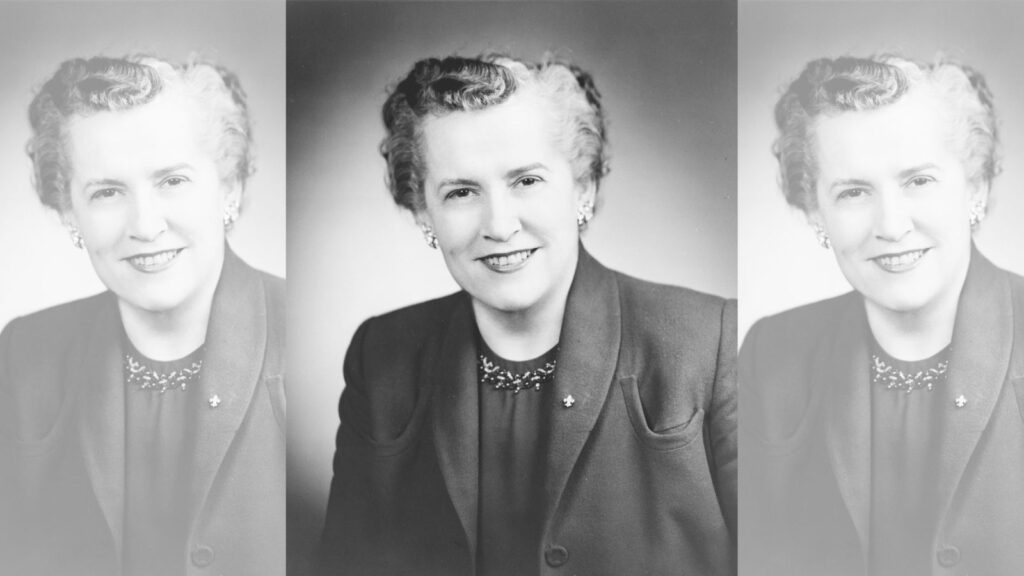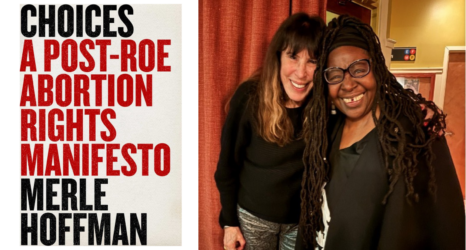
This year marks the 50th anniversary of Title IX, the landmark law that prohibits sex discrimination in education. Representative Edith Green (D-Ore.) authored, introduced and guided the bill through the House. She worked closely with Senator Birch Bayh (D-Ind.), who shepherded his version in the Senate. Green and Bayh also worked hand-in-hand with an extensive network of committed feminist activists.
The following excerpt from my book, We Too! Gender Equity in Education and the Road to Title IX, provides a glimpse into the patriarchal ecosystem that pervaded Congress during Green’s tenure in office.
In her long career as a member of Congress, Green refused to shy away from tough battles. Understanding the anti-feminist milieu of the House, she decided early on that she would not cater to its prevailing gender expectations. That the male-dominated House was unsettled by Green’s fearlessness could be seen in the ways in which the men characterized her. Instead of respecting her diligence, tenacity, and public-speaking ability, they attempted to demean her with disparaging remarks. During and after the time of Green’s tenure in the House, congresswomen were expected to “be quiet, stay in the background.” Green refused to abide by this expectation, noting, “This really wasn’t my nature!!”
When she became the second-ranking member on the Education and Labor Committee, she was able to chair the subcommittee on education. It was possible because being chair of a subcommittee was not considered being part of the power structure of House Democrats. She was excluded from Democratic Steering Committee meetings even when the men needed clarification on an education bill emanating from her subcommittee.
That congressmen were able to behave with impunity derived from congresswomen’s minuscule membership in both Capitol chambers. In 1966, for example, there were only 8 women in the U.S. Congress, 7 of them in the House (4 Democrats, 3 Republicans) and 1 in the Senate, a Democrat.
Interviewed seventeen years after entering Congress, Green recalled that at first, she responded in kind to condescending remarks or replied seriously and firmly; later she “brushed them aside.” Noting that a woman holding public office had to be “thick-skinned,” she remarked, “The male ego, you know, is very great. Any time it’s threatened, it reacts.” She was aware that male colleagues who were unnerved by women breaking gender norms called her “overaggressive” and “castrating.” She responded with tough-minded boldness, declaring, “The way I deal with antiwoman bias is quite simple. I expect no quarter, and I give no quarter. I expect not to be treated as a woman, but as a member of Congress.”
Green’s fearlessness provoked hostility, “ridicule,” and “envy” from male colleagues who believed that their only recourse was to charge her with accusations and label her with demeaning nicknames. One House member alleged that she had a “tendency to emasculate her administrative assistants,” while staffers at the Office of Economic Opportunity called her “a smiling cobra.” Some male colleagues called her “wicked witch of the West.” An old friend of hers recalled, “They were ugly, ugly, ugly to her.” The animus the men directed at her belied the “awe and respect” they had of her for being “a studious, workhorse legislator” who was a “polished, persuasive debater and a shrewd interrogator.” Indeed, it was her superb debating skills and her lack of fear in leading “bruising legislative battles” that enabled her to wield “much more power than [was] due her from mere seniority.” A veteran member of Congress noted, “She’s a bareknuckle fighter who’s capable of really whiplashing her opponents.
Her advice to young women interested in politics: “Women should stop settling for licking stamps and ringing doorbells for male candidates. Women should start to run for office themselves. They should run for national office, local office, city councils, county commissionerships, and state legislatures. And they shouldn’t be thin-skinned or emotional about the things that will happen to them. A woman can’t afford to allow herself to be hurt when things are said about her.” Although she disapproved of women marching in the streets, she supported the women’s rights movements, remarking that although she did not believe in quotas, she hoped that her “granddaughter would live to see the day when half of the members of Congress were female.” “I’m hoping,” she said, that the new feminism will create a situation in which men and women will be able to work at making important national decisions on an equal basis. We’ve been doing things the other way long enough.”
In rejecting women protesting in the streets, Green, like most women of her time, bought into the dominant mindset that rejected what was then called “women’s liberation.” “I disapprove of most of its methods,” she declared. “I think the flamboyance actually does harm to the cause of equal rights. . . . After the marches and shouting, what have you got? . . . People start lining up on one side or the other. . . . In so doing they alienate some people . . . lose votes in Congress . . . lose support generally.” Agreeing with Green’s perspective, the reporter Bill Robertson articulated the general media bias against radical feminists, offering a benign image of Green by writing that she worked quietly “behind a wall of noise created by more vocal equal rights advocates.” Thus, at the same time that she was vilified by her male colleagues, Green benefitted from negative reactions to women marching in protest, as her behavior seemed more reasonable and acceptable.
Material from Eileen H. Tamura, We Too! Gender Equity in Education and the Road to Title IX, 2022, Springer Nature, reproduced with permission of SNCSC.
U.S. democracy is at a dangerous inflection point—from the demise of abortion rights, to a lack of pay equity and parental leave, to skyrocketing maternal mortality, and attacks on trans health. Left unchecked, these crises will lead to wider gaps in political participation and representation. For 50 years, Ms. has been forging feminist journalism—reporting, rebelling and truth-telling from the front-lines, championing the Equal Rights Amendment, and centering the stories of those most impacted. With all that’s at stake for equality, we are redoubling our commitment for the next 50 years. In turn, we need your help, Support Ms. today with a donation—any amount that is meaningful to you. For as little as $5 each month, you’ll receive the print magazine along with our e-newsletters, action alerts, and invitations to Ms. Studios events and podcasts. We are grateful for your loyalty and ferocity.
Read more:





